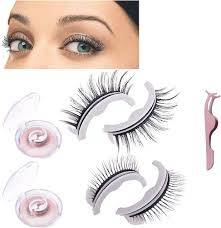The Remarkable Role of Eyelashes: Nature’s Water-Repellent Shields
Eyelashes, those tiny, often-overlooked hairs framing our eyes, serve a much greater purpose than merely adding aesthetic appeal. These specialized hairs are marvels of biological engineering, playing a crucial role in protecting our eyes. One of their most fascinating features is their ability to help fling water away from the surface of the eyes, ensuring clear vision and reducing irritation. This article explores how eyelashes perform this vital function and highlights the scientific principles behind their unique design.
---
Anatomy of Eyelashes: More Than Just Hairs
Eyelashes are a type of terminal hair, meaning they are thicker and coarser than other hair types like vellus (peach fuzz). They grow in a semi-circular arc along the edges of the upper and lower eyelids. On average, humans have about 90 to 160 lashes on the upper lid and 75 to 80 on the lower lid. Unlike scalp hair, eyelashes have a shorter growth cycle, lasting only about 30 to 45 days before falling out naturally and regenerating.
Each eyelash is richly supplied with nerve endings, making them incredibly sensitive to touch. This sensitivity allows them to act as an early warning system, prompting the eyelid to close reflexively when foreign particles approach the eye.
---
Water-Repelling Design: A Study in Functionality
The water-flinging ability of eyelashes lies in their structural and functional design. Scientists have studied the geometry of eyelashes and discovered that their length, density, and curvature are optimized to minimize airflow and water contact with the eye’s surface. Here’s how this works:
1. **Optimal Length and Density**
Research shows that the ideal eyelash length is approximately one-third the width of the eye. This proportion creates a protective barrier that diverts airflow and airborne particles away from the eye. When water droplets land near the eye, eyelashes prevent them from settling directly on the sensitive corneal surface.
2. **Curved Shape**
The natural curvature of eyelashes helps to guide water and debris away from the eye. When the eyelids blink, the lashes sweep together, forming a watertight seal that helps push water outward and away from the center of the eye.
3. **Hydrophobic Properties**
Eyelashes have a hydrophobic (water-repelling) surface, which prevents water from clinging to them. This feature ensures that any moisture on the lashes is quickly flung away with the blink of an eye.
---
The Science Behind Eyelashes and Water Dynamics
A pivotal study conducted by researchers at the Georgia Institute of Technology explored the role of eyelash geometry in water management. Using wind tunnel experiments and artificial eyelash models, the researchers simulated different environmental conditions, including rain and high-speed airflow. They found that eyelash length and spacing significantly influenced how well the eye remained protected from water and debris.
When eyelashes were too short or overly long, their efficiency as water repellents decreased. Overly short lashes allowed water droplets to reach the eye’s surface, while excessively long lashes created turbulence that directed moisture toward the eye. The one-third width ratio proved to be the sweet spot for maximum protection.
---
Blink Reflex and Its Role in Water Flinging
The blinking reflex plays a critical role in the water-repelling capabilities of eyelashes. Humans blink approximately 15 to 20 times per minute, and each blink acts as a mini-cleaning mechanism for the eye. During a blink, the eyelashes come together to create a sweeping motion, dislodging water droplets and particles. This motion, combined with the hydrophobic nature of the lashes, ensures that water does not accumulate on the eye’s surface.
---
Evolutionary Advantages of Water-Repelling Eyelashes
From an evolutionary perspective, the ability of eyelashes to manage water has provided significant survival advantages. Clear vision is critical for detecting predators, navigating the environment, and finding food. The water-repellent properties of eyelashes help maintain unobstructed vision in various weather conditions, such as rain or mist. Moreover, by reducing the risk of waterborne pathogens entering the eye, eyelashes contribute to overall ocular health.
---
Implications for Artificial Eyelashes and Eye Care
The scientific understanding of eyelash functionality has implications beyond biology. Designers of artificial eyelashes and cosmetic products can use these insights to create lashes that mimic the protective features of natural eyelashes. For instance, false eyelashes that are too long or densely packed may look appealing but could inadvertently disrupt airflow and increase irritation.
Eye care professionals also emphasize the importance of maintaining healthy eyelashes. Overuse of mascara, improper removal of makeup, or harsh treatments can damage lashes, compromising their protective functions. Ensuring that eyelashes remain intact and healthy is key to preserving their ability to shield the eyes from water and debris.
---
Conclusion: Nature’s Ingenious Solution
Eyelashes may seem like a small and simple feature of the human body, but their role in protecting our eyes is indispensable. Through their precise length, curvature, and hydrophobic properties, eyelashes help to fling water away from the eyes, ensuring clear vision and comfort. This elegant solution, honed by evolution, demonstrates the remarkable ingenuity of nature. By appreciating the science behind eyelashes, we gain a deeper understanding of how our bodies are equipped to navigate and adapt to the challenges of the environment.



